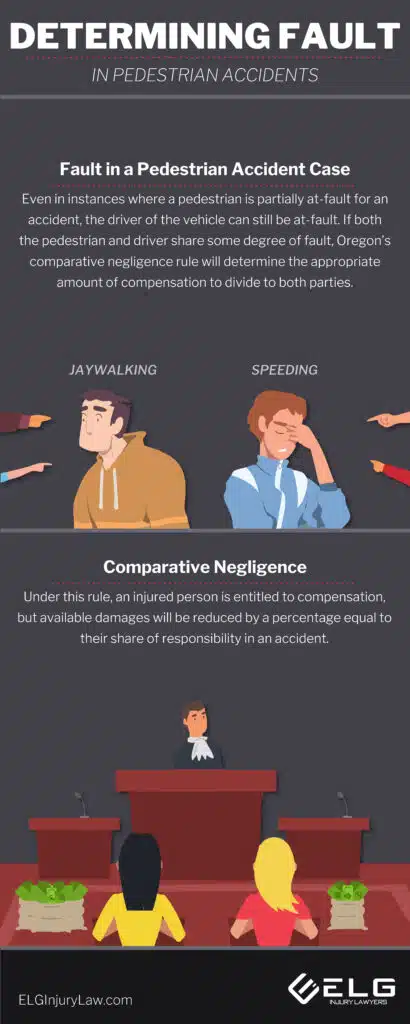
Is jaywalking illegal in Oregon? Yes, it is. Pedestrians are required to use designated crosswalks and obey traffic signals when crossing streets. Violations can lead to fines and increase the risk of accidents. In this article, we’ll explore Oregon’s pedestrian laws in detail, the penalties for jaywalking, and provide safety tips for both pedestrians and drivers.
Key Takeaways
- Jaywalking in Oregon is illegal, requiring pedestrians to follow traffic signals and use designated crosswalks to enhance safety.
- Pedestrians have the right-of-way in marked and unmarked crosswalks, while drivers must remain vigilant to prevent accidents and ensure compliance with pedestrian laws.
- Ignoring pedestrian laws can result in legal penalties and increased risk of accidents, making it essential for both pedestrians and drivers to understand their rights and responsibilities.
Jaywalking in Oregon: The Basics
Jaywalking involves crossing a street in a manner that disregards traffic laws or outside designated crossing areas. In Oregon, this means crossing the street outside of marked crosswalks or against traffic signals, which can pose significant risks to both pedestrians and drivers. Understanding what constitutes jaywalking helps us appreciate the importance of following pedestrian laws designed for everyone’s safety.
Oregon law requires pedestrians to follow traffic control signals, including traffic lights, when crossing roadways. This means waiting for pedestrian signals to indicate it’s safe to cross and using designated crosswalks whenever possible. Local authorities also have the power to implement specific rules about pedestrian crossings, including prohibiting jaywalking in certain areas to enhance road safety.
Ignoring these general rules not only increases the risk of accidents but can also result in penalties. Pedestrians need to proceed with awareness of and comply with legal requirements when crossing streets to ensure that the pedestrian complies with regulations, avoid potential fines, and enhance overall safety on the roads.
Oregon Pedestrian Laws Overview
The pedestrian laws in Oregon are carefully crafted. They aim to ensure the safety of both pedestrians and drivers. These laws grant pedestrians the right-of-way in crosswalks and at intersections, ensuring that they can cross safely. Every intersection in Oregon is considered a pedestrian crosswalk, irrespective of markings, making it crucial for drivers to be vigilant and yield to pedestrians at all times.
These laws help foster a safer environment where pedestrians and drivers can coexist harmoniously.
Marked Crosswalks and Right-of-Way

When a pedestrian crosses streets, pedestrians are safest at these marked crosswalks and intersections where traffic signals should be obeyed. Violating these regulations can result in penalties under Oregon Revised Statutes 814.020.
At intersections, pedestrians have the right-of-way, even if there are no marked crosswalks. When a pedestrian is crossing a roadway in a crosswalk, drivers must yield and remain stopped until the pedestrian has fully cleared the lane. Failing to obey traffic signals or disregarding traffic control devices not only endangers pedestrians but also constitutes a Class D traffic violation in Oregon.
Drivers must be particularly vigilant at intersections and marked crosswalks, ensuring they yield to pedestrians and follow all traffic control devices. This not only prevents accidents but also upholds the legal right-of-way that pedestrians have in these areas.
Unmarked Crosswalks and Legal Implications
In Oregon, pedestrians have the right-of-way at uncontrolled intersections, even if there are no marked crosswalks. This means that drivers must yield to pedestrians at these intersections, enhancing road safety and ensuring that pedestrians can cross safely.
However, when pedestrians cross outside of a crosswalk, they must yield to vehicles. This legal obligation helps balance the safety and responsibilities between pedestrians and drivers, reducing the risk of accidents.
Knowing the right-of-way rules at unmarked crosswalks and uncontrolled intersections is vital for both pedestrians and drivers, marked or unmarked. It ensures that everyone knows their responsibilities, promoting a safer environment on the roads.
Let's Settle For More... Get Your FREE Case Review Today.
Let's Settle For More... Get Your FREE Case Review Today.
Consequences of Jaywalking
Oregon Revised Statutes 814.020 classifies failing to obey traffic control devices as a Class D traffic violation. This means that pedestrians who ignore traffic signals or cross outside designated areas can face fines and other penalties related to the traffic device. These legal consequences are designed to deter jaywalking and encourage safer pedestrian behaviors, especially when a steady yellow light is present.
Beyond the legal repercussions, jaywalking significantly increases the risk of accidents. Pedestrians who cross outside of designated areas are more likely to be struck by vehicles, leading to severe injuries or even fatalities. Therefore, adhering to pedestrian laws not only helps avoid legal trouble but also plays a crucial role in ensuring personal safety.
Approximately 75% of pedestrian accidents are caused by drivers failing to yield the right-of-way, highlighting the critical role of driver responsibility. If a driver fails to yield to a pedestrian in a crosswalk, the driver is likely liable for the pedestrian’s injuries. This underscores the importance of understanding and following pedestrian laws to determine liability in personal injury cases related to a pedestrian accident.
Injured pedestrians in Oregon can receive compensation for losses, including medical expenses and lost wages. Legal representation is crucial for navigating complex insurance negotiations and pursuing personal injury claims, ensuring injured pedestrians can effectively seek deserved compensation.
Safety Tips for Pedestrians
Pedestrians can enhance their visibility, especially at night, by wearing bright clothing and using a flashlight to stay safe while walking. Making eye contact with drivers ensures that they are seen before crossing the street.
Pedestrians should always look both ways before crossing, following the left-right-left rule, and avoid using mobile phones, which can distract them from their surroundings. Staying alert and following traffic rules are crucial for preventing accidents and ensuring road safety.
Adhering to these safety tips significantly reduces the risk of accidents, ensuring a safer walking experience for pedestrians.
How Drivers Should Respond to Jaywalking
Drivers must remain vigilant and expect many drivers to see pedestrians cross outside designated areas, especially in urban settings. When approaching a potential jaywalker, reducing speed and being prepared to stop can prevent accidents involving people crossing, as failing to do so may present an immediate hazard. To ensure safety, it is crucial to stay alert.
Maintaining a safe following distance allows for better reaction times if a pedestrian suddenly enters the road. Since drivers can share liability in pedestrian accidents, especially if both parties exhibit negligent behavior, it is imperative to practice safe driving habits at all times.
Legal Assistance for Injured Pedestrians
Injured pedestrians must understand their legal rights and options. Contacting ELG Injury Lawyers for a free consultation provides the guidance needed to navigate legal complexities and protect your interests.
Fault determination in Oregon can significantly influence the amount of compensation a pedestrian can claim after an accident. Specialized attorneys can help injured pedestrians understand their legal rights, pursue compensation for medical expenses and lost wages, and navigate complex insurance negotiations.
Seeking legal assistance ensures that injured pedestrians can effectively pursue their claims and receive the compensation they deserve while proceeding with their cases and obtaining medical attention.
Frequently Asked Questions
What is jaywalking in Oregon?
Jaywalking in Oregon is defined as crossing the street outside of designated crosswalks or in violation of traffic signals. This behavior can result in citations and is discouraged for safety reasons.
What are the penalties for jaywalking in Oregon?
In Oregon, jaywalking results in a fine categorized as a Class D traffic violation. It is advisable to adhere to pedestrian laws to avoid such penalties.
How are pedestrian crosswalks defined in Oregon?
In Oregon, every intersection is defined as a crosswalk, regardless of whether it is marked or unmarked. This ensures that pedestrians have a designated space to cross at all intersections.
How does comparative negligence affect pedestrian accidents?
Comparative negligence affects pedestrian accidents by assigning liability according to each party’s degree of fault, directly influencing the compensation that injured pedestrians may receive. Therefore, understanding this principle is crucial for evaluating potential claims.
What should a pedestrian do after being involved in an accident?
After being involved in an accident, a pedestrian should seek medical attention and obtain legal assistance to understand their rights and pursue appropriate compensation.
Last updated Wednesday, August 6th, 2025







